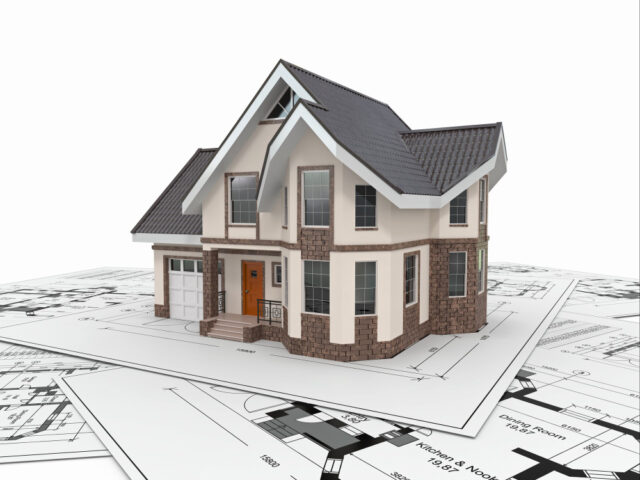
European traditions have shaped global designs across centuries. From monumental cathedrals to minimalist metropolitan residences, the evolution of design in Europe continues to influence how we design and build structures. Architectural styles such as Gothic, Renaissance, Baroque, and Neoclassical have left their mark on historic skylines. Today’s architects, such as Eric Wippman, blend historical elements with current trends, creating new expressions that remain rooted in timeless principles.
Modern Design and Historical Influences
Modern designs often emphasize simplicity, functionality, and clean lines, yet they frequently draw from centuries-old architectural traditions. Designers today continue to study and reinterpret elements from earlier styles.
European architecture, with its range of forms and philosophies, offers a rich source of references. From the precision of Neoclassicism to the expressive forms of Gothic structures, these styles continue to shape the visual style of modern buildings. Museums, universities, and public buildings around the world often reflect these influences.
Defining Characteristics of European Styles
Gothic cathedrals soar with pointed arches and intricate stonework, while Renaissance designs celebrate balance and proportion. Baroque structures dazzle with dramatic flair, rich ornamentation, and theatrical use of space.
Later movements like Neoclassicism revived Greco-Roman ideals, emphasizing symmetry, columns, and harmonious geometry. Bauhaus, emerging in the 20th century, broke from tradition with its minimalist ethos and industrial materials, reshaping the way designers approached space and layouts. These characteristics continue to echo in modern design through subtle nods and bold reinterpretations.
Across Europe, each regional style brought its own palette of materials and techniques—Italian stucco, French limestone, German timber detailing—forming an architectural legacy. These features, deeply rooted in craftsmanship and philosophy, still resonate in modern projects that strive for beauty and utility. Architects often reinterpret these features to meet urban demands without losing touch with their origins.
Impact on Structure and Spatial Planning
Contemporary architects often borrow structural clarity and balance from classical European design. The symmetry of Neoclassical buildings, the rhythmic use of columns, and the proportions of Renaissance courtyards can be seen echoed in offices, libraries, and urban housing developments today.
The Bauhaus movement’s emphasis on function-driven design continues to influence spatial layouts across the globe. Open-plan interiors, integrated furnishings, and minimal ornamentation reflect this legacy, especially in urban dwellings and commercial architecture. Clean lines and geometric volumes are now hallmarks of modern environments, rooted in early European experimentation.
In cities like Berlin and Paris, modern glass-and-steel constructions rise beside centuries-old facades. Designers often retain historical exteriors while reworking interiors for present-day use. This blend of heritage and innovation exemplifies how European architectural forms still shape modern spatial planning.
Materials, Craftsmanship, and Modern Adaptation
Traditional European materials such as limestone, marble, brick, and wrought iron continue to find their place in modern construction. These elements are often adapted to meet contemporary standards, merging enduring beauty with current performance needs. The tactile nature of these materials adds depth and authenticity to new builds.
Skilled craftsmanship remains a hallmark of quality design. Decorative plasterwork, hand-carved stone accents, and bespoke ironwork—once common in Baroque and Renaissance buildings—are reinterpreted today through both artisanal and digital techniques. Whether restored or newly created, these details contribute a sense of character that’s difficult to replicate with mass-produced alternatives.
In adaptive reuse projects, old materials are often salvaged and integrated into new spaces. Exposed beams from historic barns become sculptural elements in modern homes, while reclaimed stone facades lend a sense of permanence to sleek commercial developments.
Storytelling Through Architecture and Cultural Continuity
Architecture can serve as a narrative device, and European traditions offer a rich vocabulary for storytelling through space. A building’s facade, layout, and decorative features can subtly reference historical periods, cultural values, or regional identity. Designers often use these cues to evoke a sense of place, memory, or lineage.
Boutique hotels, wine cellars, and private residences frequently use European motifs to create immersive settings. Arched doorways, herringbone floors, and fresco-inspired wall treatments are just a few of the elements that help convey a deeper story. These design choices are not just aesthetic—they establish continuity between past and present, anchoring spaces in cultural context.
Continued Influence
Architects around the world continue to be shaped by European precedents. Firms in Asia, North America, and the Middle East often incorporate European elements into their work, whether through classical symmetry or minimalist Bauhaus principles. This cross-cultural exchange enriches global design language. It also fosters innovation by merging local traditions with international influences.
Educational institutions and design residencies often bring students to European cities to study historic architecture firsthand. Walking through the streets of Florence, Vienna, or Prague becomes a tactile lesson in proportion, materiality, and spatial rhythm.
Even in the most contemporary urban settings, echoes of European design can still be found. Whether it’s a modern gallery in Tokyo with Brutalist curves or a New York townhouse with Neoclassical flourishes, the legacy of European architecture continues to inform and inspire.
Disclaimer
The information contained in South Florida Reporter is for general information purposes only.
The South Florida Reporter assumes no responsibility for errors or omissions in the contents of the Service.
In no event shall the South Florida Reporter be liable for any special, direct, indirect, consequential, or incidental damages or any damages whatsoever, whether in an action of contract, negligence or other tort, arising out of or in connection with the use of the Service or the contents of the Service. The Company reserves the right to make additions, deletions, or modifications to the contents of the Service at any time without prior notice.
The Company does not warrant that the Service is free of viruses or other harmful components












